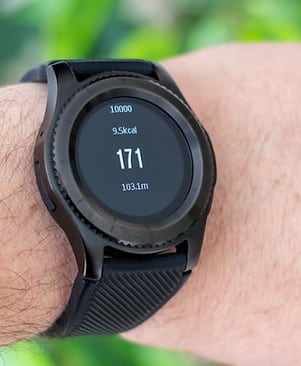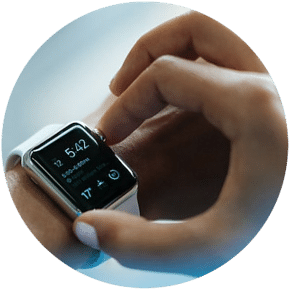Why would you want to? Are there advantages to using a heart rate monitor? Can I help you find the best rated heart rate monitor? Let’s find out.
So, why should you want to monitor your heart rate?
It really depends on your goals with your walking routine. If you are trying to maintain or lose weight, a monitor is definitely a helpful tool. If you are walking more to monitor your health and get more fit, it also can be useful. I walk for health and weight loss and have used a few different heart rate monitors or the years.
Let’s go through some overall benefits of HRM devices:
- Most of them will track your heart rate within 2-10 beats per minute accuracy.
- Heart rate is often a more accurate basis for calorie burning calculations.
- Resting heart rate is a good indication of fitness and health level.
- Many models have many other functions such as GPS, step counting, sleep monitoring and exercise databases.
As you can see, there are many great points in the device’s favor. Surely there must be some reasons to not use a heart rate monitor, though. Let’s delve into that next.
Are there reasons to not use a heart rate monitor?
Current common heart rate monitoring devices range from simple to fairly complex. It really depends on what you want out of it and how you plan to use one. If you don’t really care about tracking this portion of your health or progress, then it certainly isn’t a necessary tool. To walk you really only need the ability to take more than a couple steps.
What are a few points against these devices?
- If the monitor isn’t accurate it could be far over or under calculating your rate and calorie burn.
- For certain types of people (usually those with a healthy BMI who’s resting heart rate averages higher) they may not accurately record your calorie burn or that you are resting.
- The price on these products varies greatly from less than $50 to over $500.
- Some people may have allergic reaction to the materials the monitors or their straps may be made from.
Why I use a HRM
I have used several types of monitors through the years. Over the past decade I’ve had 5 different ones. I’ve also gifted a couple friends cheaper ones that they enjoyed for a year or so until they broke. That is one thing I recommend about getting a more well-made, often more expensive model, is they tend to last at least 2 years- many over 3 years.
Now, if you get a year out of a $60 device and a $150 one lasts you 3 years you will come out slightly ahead monetarily. How long these implements last depends on a couple things, though. First it’s the quality of the materials and how they are assembled. Secondly, It depends on how you treat them. If you have a rougher lifestyle, where you may be banging them on things often, drastically changing the temperature frequently or have pets or kids who may use them as toys they like to destroy your monitor may end up dead before it’s time.
I have a somewhat rough life as I have livestock, pets and don’t tend to be gentle on my equipment. My most recent HRM died a couple months back. It worked for 2 and a half years. I plan to delve into a review of that product in this article’s next section.
I personally use a heart rate monitor primarily because no online database or equipment’s general calculator ever shows my calorie burns accurately for walking. Based on my height and weight my burns are anywhere from 10 to 25% off. If I’m trying to stay under a certain amount of calories consumed or eat back exercise calories I need a pretty accurate assessment of my calories burned during exercise. I also tend to branch out into other exercises, some which are not in any database. Having a burn estimated based on my heart rate is helpful.
I also really like seeing my resting heart rate go down as I get in better shape. It shows me progress over the weeks and months of a routine. My previous HRM also monitored my sleep which I found interesting. It also came with a service where I could see my walk paths to see if I was getting faster on certain ones I frequented. I like seeing data to see where I am improving and what still needs more work.
What heart rate monitors do I recommend?
I’ll break down some devices that I personally have experience with or who very close friends have given me feedback on.
First, I just want to mention, as an Amazon Associate, I earn from qualifying purchases. If you happen to purchase from links at Welcomebacktowalking.com, I may make a small commission.
Let’s start with a Fit Bit I gifted two of my closest friends this model about 2 years ago. They loved them!
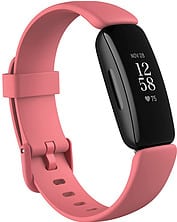
The positives they liked about this fairly inexpensive and more common HRM is it’s smaller size and ease of use. It has the ability to connect to most common newer cell phones and Fit Bit has a very highly liked community with tips and many nice tools.
The negatives were the device had to be worn quite tightly to get accurate readings and one of my friends had rashes if she started sweating under the plastic band. The band is changeable for sizing issues, though. The other friend said the face got major scratches pretty easy. Both of my friends have kids and pets and with normal use this model lasted them between 9 and 16 months.
Both of my friends were using there Fit Bit for more than just walking but it doesn’t give a lot of options for storing individual data on different exercises.
Overall between their feedback I’d rate this version of Fitbit a 7 out of 10.
Next, we’ll look into my personal experience with various heart rate monitors. There are three of them I have used the most and will give short reviews of here.
My first Heart rate monitor I got about 11 years ago and used specifically just during my exercise bouts. I was doing aerobics, stairs, dance and walking. It had no ability to save any separate exercises or much data beyond your birthday, weight, height, calories burns for a specific period (like a week) and healthy heart rate ranges. It also uses a chest strap and doesn’t read off your wrist.
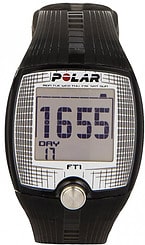 Polar FT1
Polar FT1
This was a good beginner heart rate monitor at the time. I believe it cost me around $100 back then and did everything I needed at the time. It’s not really available through Polar directly any longer but some are still available on Amazon and other online retailers. This product lasted about 4 and half years only being worn during the actual exercise times.
Overall I’d rate this older Polar 6 out of 10.
Next I got a Garmin Heart rate monitor. Garmin is definitely high tech and this was not a cutting edge or high end model from them. Garmin’s Forerunner series was well liked so I got a refurbished one about 6 years ago.
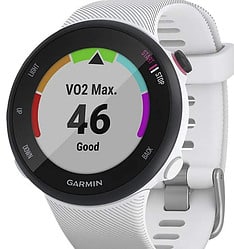
I didn’t use many of the features such as having text’s forwarded to it or routing calls through it. I rarely used it for music as it was a bit less reliable to link to my headphones than my tablet. At the time, they had a decent online service and I have heard it is loads better now to show your maps, progress, burns, steps and a variety of different exercises to choose from. It’s Vo2 test was interested as well.
The heart rate monitor accuracy is not as good as Polar from my experience but it is close enough that I wasn’t very worried.
I got it as refurbished and it was about a year old at the time. It lasted me about 10 months. Their newer ones reviews state longevity over 3 years often
Overall I rate this Garmin 6.5 out of 10.
Next I went back to Polar. Mostly I did due to my experience with the older version with the chest strap. I also preferred the more accurate monitoring. The older devices were still beloved but were no longer being made by Polar, so only used very expensive versions were available. So I moved up to a wrist model of Polar.
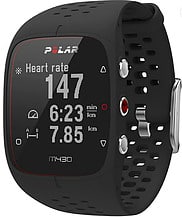
I used and wore my Polar M430 every day and basically every minute it wasn’t charging. I used it for walking, riding a cycle, gym workouts, my Total Gym Exercise, aerobics, bowling and swimming. I could have used it for any sport I tried, as it not only had a big database of exercise available, you could customize and name new routines or programs. I had one called Danceaerobics.
It had a unique charging port so was basically waterproof unlike previous models with mini USB ports for charging. It monitored my sleep, had the ability to constantly monitor my heart rate or I could turn it on just during exercise to save battery. The GPS was pretty dang accurate. It too offered Vo2 readings.
The altitude monitoring was only so-so. I live in a hill ridden area and sometimes it wouldn’t catch me going up hills at all. It also had clear and easy to navigate screen on the watch and a really nice online database with lots of forums, info and help. I used it mostly to see my maps and average activity progress.
Things I wasn’t thrilled about on this Polar were a few. It wasn’t as easy to link with as many systems as it could be. The way the watch connected to it’s band broke about 10 months in. I was able to glue it back together and it didn’t effect the use but didn’t look great.
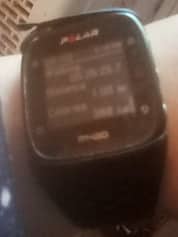 As you can see the left top was glued several times but still began to break away little pieces that would stick up. This picture was taken about 8 months ago, after daily wear for over a year and half.
As you can see the left top was glued several times but still began to break away little pieces that would stick up. This picture was taken about 8 months ago, after daily wear for over a year and half.
Overall I was sad when one day I woke up with the face blanked out and no matter how long I charged or tried to reset it was dead. I was not a gentle owner and it showed.
I still was rate this beloved device 8 out of 10.
So, should you buy a heart rate monitor?
Overall, I would say a heart rate monitor is a great tool I would recommend for anyone wanting to better monitor their progress and overall health. I plan to replace my expired one with yet another newer Polar I will talk about more in another post. In fact that device will get a post all to itself.
HRM devices aren’t for everyone. If you plan to only walk, and just do so strictly for health not better fitness or weight loss, then you really don’t need one. If you are walking to better your fitness maintain or lose weight, then I would recommend checking out these mentioned heart rate monitors or similar ones else where.
I can’t wait to see you strolling along,
Kimmie
